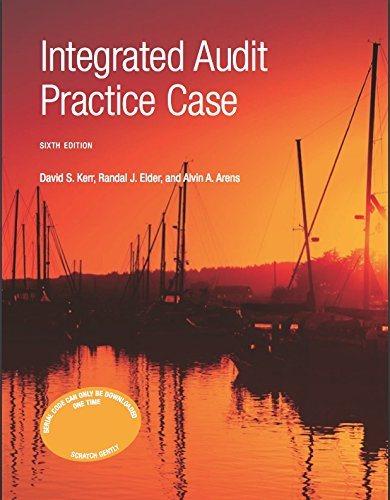Question
QUESTION: Summairze the below reflection in your own words. THE POWER CASH FLOW RATIOS Cash flow can be defined as the sum of money being
QUESTION: Summairze the below reflection in your own words.
THE POWER CASH FLOW RATIOS
Cash flow can be defined as the sum of money being moved in and out of a business. Therefore, the statement of cash flow is one of three major financial statements and it seeks to illustrate how changes in the balance sheet and income statement affects cash and cash equivalents. The cash flow breakdown these changes into three sections; operating, investing and financing activities. This statement provides valuable insight into a companys liquidity, solvency and its going concern ability to both internal and external users. The best way to evaluate these insights, is to use ratios to measure the companys position against industry standards and benchmarks.
The Article stresses the importance of the cashflow statement, as it points out its reliability over both the income statement and the balance sheet. The authors make it clear that while the balance sheet reports static data and the income statement contains arbitrary non-cash allocations, the cashflow focusing on what is really important to shareholders; cash available for operations and investments. For this reason, cash flow ratios are considered superior over those from other financial statements. These ratios, over time, has been known to assist professionals in gauging a companys performance by answering questions that will lead to how important operational and investing decisions are made.
With this in mind, the author reveals that auditors continue to undermine the value of the cashflow statement. By calculating simple ratios from data on clients cash flow statements, auditors can ensure that their plan audits accordingly to ensure opinions on the clients operations are accurate. In the past auditors have been known to use the balance sheet or a transaction cycles approach to conduct an audit. These approaches do not emphasize the cash or the statement of cash flow but rather uses the cash flow statement in the verification process for accounts on both income statement and balance sheet. They fail to utilize ratios from the cash flow statement for cash-related analysis and rather limit their scope to balance sheet ratios (current and quick ratio). However, auditors cannot be totally blamed for their neglect of the statement, as educators also fail to emphasize the importance of cash flow statements by not including cash flow ratios in auditing textbooks. It is imperative that the next generation of auditors have a great understanding how to use the cash flow statement and apply these ratios.
The authors illustrated in the article how valuable cash flow ratios can be to accurately identify a companys financial position by referring to the collapse of W.T. Grant. Because analysis of the balance sheet and income statement performed during the audit did not reveal severe liquidity issues facing the company, it eventually filed for bankruptcy. While the company showed positive current ratios and earnings, it had severely negative cash flows which proved that they were unable to meet current debt and other commitment to creditors.
The article classifies the most useful cash flow ratios into two general groups: ratios to test a companys solvency and liquidity and those that shows its ability as a going concern. As it relates to solvency and liquidity, the operating cash flow ratio measures the companys ability to use it resources to meet liabilities. The funds flow coverage ratio is used to indicate the ability of the company to pay its interest and principal payments as they become due. The cash ratio is used to measure a companys capacity to cover its liabilities and can be viewed as conservative as it leaves out other assets that are usually used in other liquidity ratios. The second group of ratios which are used to test going concerns are: The free cash flow ratio which measures a company financial performance. Cash flow adequacy ratio is the primary measure of cash sufficiency. Cash flow to capital expenditure ratio highlights the companys cash from its operations to its capital expenditures.
Step by Step Solution
There are 3 Steps involved in it
Step: 1

Get Instant Access to Expert-Tailored Solutions
See step-by-step solutions with expert insights and AI powered tools for academic success
Step: 2

Step: 3

Ace Your Homework with AI
Get the answers you need in no time with our AI-driven, step-by-step assistance
Get Started


